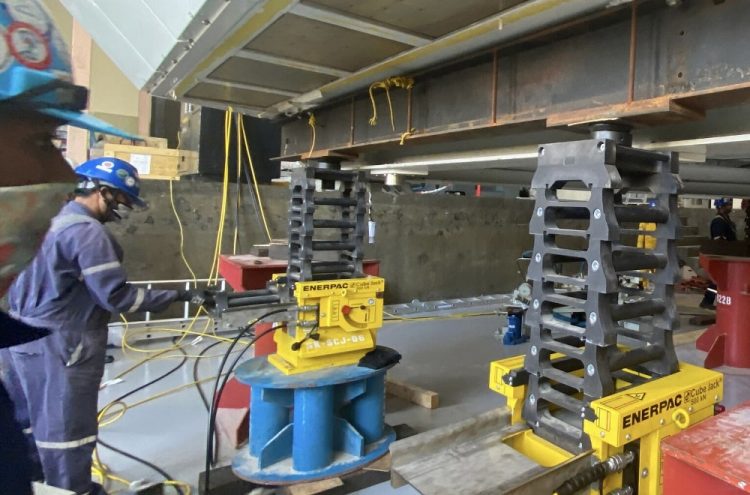What is a hydraulic jacking system?
Are you curious about hydraulic jacking systems? If yes, you found the right post. This post will discuss everything about hydraulic jacks and hydraulic jack systems. So, let’s get started.
What Is A Hydraulic Jacking System?
Hydraulic Jacking System: All About It
Hydraulic jacks are lifting gear that allows users to lift impressive weights safely. Hydraulic jacking systems are used in various industries, including automotive, warehousing, manufacturing, and tradespeople. The “Pascal’s Principle” is used to create hydraulic jacks.
The application of pressure in one manner yields forces in another. Hydraulic jacks comprise two cylinders, one bigger than the other. Cylinders in hydraulic jacking systems lift items by exerting pressure throughout and against the cylinder’s surface by providing force to the fluid within, typically transmitted through hydraulic hoses. These hydraulic hoses serve as conduits, carrying the pressurized fluid from the pump to the cylinders, enabling force transfer, and allowing the jacks to lift heavy loads effectively. It’s possible to create greater force from the giant cylinder by adding a smaller cylinder, allowing it to lift even heavier weights.
Hydraulic Jacks: How to Use Them?
It would be best to use your hydraulic jack appropriately because you will most likely utilize hydraulic jacks to lift massive objects.
- To operate your hydraulic jack correctly, ensure it’s on a level surface free of grit, grease, or dirt.
- Place your jack safely under the vehicle or load you want to raise. If lifting a car, ensure the jack is aligned with the cross member.
- After you’ve fastened the jack, you may begin pumping it up to the desired height.
- Using jack stands, secure your cargo at the desired height.
Maintenance of Hydraulic Jacks
Maintaining your hydraulic jacks is critical for them to continue to perform properly. Protect your hydraulic jack from the weather, dust, and debris to ensure that it is fully protected.
This may be accomplished by keeping your jack covered and ensuring it is not exposed to harsh conditions for lengthy periods since this can prematurely damage the seals on your jacks.
The ram piston should be retracted while storing your hydraulic jack. This will avoid any damage to the piston, which would cause the jack to stop working correctly.
Types of Hydraulic Jacks
There are many different types of hydraulic jacks on the market, each with its own set of capabilities. Here are a few of the hydraulic jacks and hydraulic jacking systems you can easily find, as well as their various applications.
Standard Cylinder
Standard cylinder jacks are incredibly adaptable. They may be used vertically to raise big things and loads or horizontally to push a load or secure an object.
Hydraulic jacking system manufacturers offer a wide selection of conventional hydraulic cylinders carefully built to withstand the frequently severe circumstances of modern workplaces and building sites. Cylinder jacks ranging from 10 tons to 100 tons can easily match your particular requirements.
Pad Jacks
These are our tiniest jacks, perfect for lifting weights in tight spaces. However, please don’t assume they can’t handle much weight because they’re little. These little jacks can lift up to 200 tons!
Low Profile Jacks
Low-profile jacks, like regular cylinder jacks, may lift and push items. Only the size makes a difference!
These jacks aren’t relatively as compact as pad jacks, but they’re still designed for weights with limited clearance. Like their larger counterparts, they may be used in a vertical position to raise a heavy weight or in a horizontal position to secure or push a load.
Centre Hole Cylinder
Like the cylinder, low profile, and pad jacks, center hole jacks may be used to lift and push significant things. They also have a pull feature. The jack features a hole in the middle of the ram that may be utilized to assist in producing tension by feeding a chain through it. On constructions like suspension bridges, they are used to tighten wire ropes.
Bottle Jack
Bottle jacks are most typically employed in the automobile sector to elevate large vehicles like cars or lorries to enable inspection or servicing under the vehicle. Still, they’re not only used for that! Bottle jacks have benefitted various sectors, including plumbing and warehousing goods lifts.
Selection criteria
You must consider various features when determining which hydraulic jack is appropriate for you and your application.
Load capacity: The most important metric is the lifting load capacity.
Check to see if the hydraulic jack will fit below the load. The hydraulic floor jack has the smallest profile of the two primary varieties. You may also use a toe-type bottle jack for a side lift.
Lift height: A telescoping bottle jack has a more extended lift height than a regular bottle jack but has a lesser lifting capacity.
Consider if the hydraulic jack will be used for vertical lift, horizontal push, or both.
Manual or automatic: Air or electric pumps power a heavy-duty hydraulic bottle jack. A powered pump substitutes the manual hand lever with an automated hydraulic jack.
Some hydraulic jacks, such as jacks for splitting wood logs, are developed expressly for specific industrial purposes. Check to see whether it will meet your requirements.
Final Verdict
Finally, you might have understood the hydraulic jacking systems and their selection. If you are confused, let us know, and we will help.

















